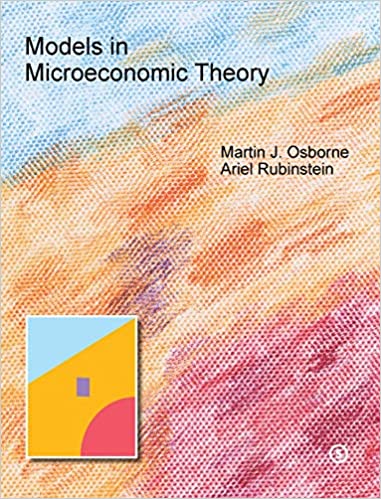
Models in microeconomic theory covers basic models in current microeconomic theory. Part I (Chapters 1–7) presents models of an economic agent, discussing abstract models of preferences, choice, and decision making under uncertainty, before turning to models of the consumer, the producer, and monopoly. Part II (Chapters 8–14) introduces the concept of equilibrium, beginning, unconventionally, with the models of the jungle and an economy with indivisible goods, and continuing with models of an exchange economy, equilibrium with rational expectations, and an economy with asymmetric information. Part III (Chapters 15–16) provides an introduction to game theory, covering strategic and extensive games and the concepts of Nash equilibrium and subgame perfect equilibrium. Part IV (Chapters 17–20) gives a taste of the topics of mechanism design, matching, the axiomatic analysis of economic systems, and social choice.
The book focuses on the concepts of model and equilibrium. Models and results are stated precisely, and proofs are given for all results. The book uses only elementary mathematics (with almost no calculus), although many of the proofs involve sustained logical arguments. It includes about 150 exercises.
The expanded second edition includes new sections of Chapter 15 on correlated equilibrium and S(1)-equilibrium and a new section of Chapter 16 on repeated games. These two chapters could now be the basis of a short course on game theory.
sales pitch
Blog entry by Martin Osborne on the publisher's website.
full text
The full text of the book is freely available in electronic form from the publisher: version with feminine pronouns, version with masculine pronouns.
solution manual
Instructors may request the solution manual here.